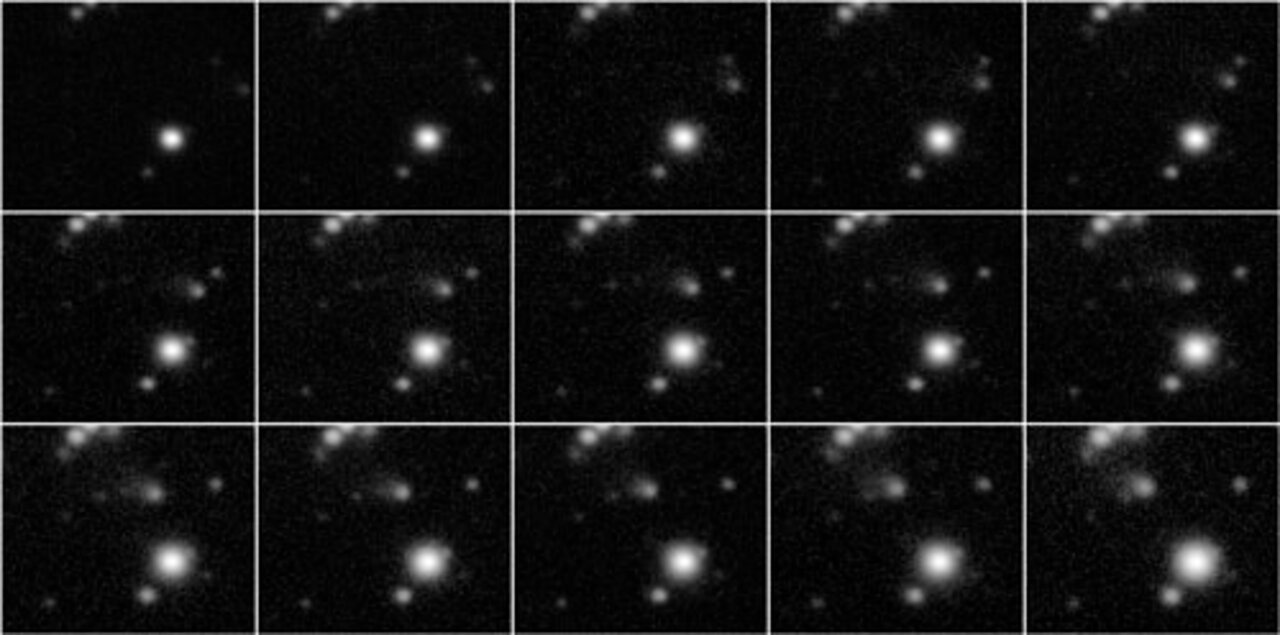A Pair of Stellar Corpses Surrenders Secrets
October 21, 2014

For Scientists:
The paper is accepted for publication in the Monthly Notices of the Royal Astronomical Society Letters and can be accessed at arXiv.org.
Scientific Abstract (from the paper):
We report the discovery of the first millisecond pulsar with a pulsating white dwarf companion. Following the recent discoveries of pulsations in extremely low-mass (ELM, <0. 3 M⊙ ) white dwarfs (WDs), we targeted ELM WD companions to two millisecond pulsars with high-speed Gemini photometry. We find significant optical variability in PSR J1738+0333 with periods between roughly 1790− 3060 s, consistent in timescale with theoretical and empirical observations of pulsations in ≈ 0.17 M⊙ He-core ELM WDs. We additionally put stringent limits on a lack of variability in PSR J1909− 3744, showing this ELM WD is not variable to < 0.1 per cent amplitude. Thanks to the accurate distance and radius estimates from radio timing measurements, PSR J1738+0333 becomes a benchmark for low mass, pulsating WDs. Future, more extensive time-series photometry of this system offers an unprecedented opportunity to constrain the physical parameters (including the cooling age) and interior structure of this ELM WD, and in turn, the mass and spin-down age of its pulsar companion.
Result in a Nutshell:
The universe is a place of extremes, but rarely do astronomers get a chance to observe two so closely associated as in this recent finding based on Gemini data. The observations, led by Mukremin Kilic of the University of Oklahoma, reveal a unique, very close pairing of stellar corpses that have different evolutionary histories: one is the extremely dense, mountain-sized remains of a supernova explosion (called a pulsar, a rapidly rotating neutron star spinning (in this case) at over 10,000 times per minute), and the other is a Neptune-sized cooling ember of a deceased Sun-like star (a white dwarf) that pulsates about every 30 minutes. Together, this orbiting pair provides a unique laboratory for the understanding, and testing of theoretical models on the mass, internal structure, and characteristics of neutron stars and white dwarfs – the evolutionary end-states of many, if not most, stars.
